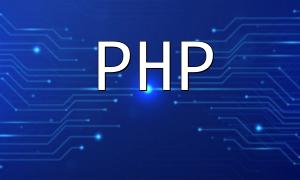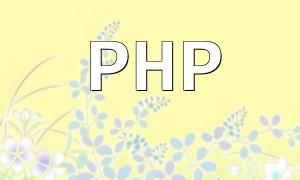In today's technology-driven world, Java and PHP, as two popular programming languages, often need to interact with each other to exchange data. Consumers and businesses alike want to efficiently retrieve data from PHP and use it in Java applications. This article will explain how to achieve this goal and follow best practices for Google search engine optimization (SEO) to improve the visibility and usefulness of the content.
<h3>The Necessity of Java and PHP Data Interaction</h3>
<p>Many applications use a combination of Java and PHP to simplify backend development and improve performance. Java is commonly used for building large enterprise applications, while PHP is well-suited for handling dynamic content in web applications. By retrieving data from PHP, Java applications can obtain real-time information, thereby enhancing user experience.</p>
<h3>Basic Methods for Retrieving PHP Data</h3>
<p>A common way to retrieve PHP data is through HTTP requests. Java can use several libraries (such as HttpURLConnection or Apache HttpClient) to achieve this. Here’s a basic example using HttpURLConnection:</p>
<div class="code-toolbar">
<pre class="language-php" tabindex="0"><code class="language-php">
// PHP Code Example: api.php
$data = array("message" => "Hello from PHP");
header('Content-Type: application/json');
echo json_encode($data);
<h3>Sending HTTP Requests in Java</h3>
<p>Below is an example of how Java can send an HTTP request and retrieve data from PHP:</p>
<div class="code-toolbar">
<pre class="language-java" tabindex="0"><code class="language-java">
// Java Code Example: FetchData.java
import java.io.BufferedReader;
import java.io.InputStreamReader;
import java.net.HttpURLConnection;
import java.net.URL;
public class FetchData {
public static void main(String[] args) {
try {
String url = "http://yourserver.com/api.php"; // Replace with your PHP API URL
HttpURLConnection conn = (HttpURLConnection) new URL(url).openConnection();
conn.setRequestMethod("GET");
BufferedReader in = new BufferedReader(new InputStreamReader(conn.getInputStream()));
String inputLine;
StringBuilder response = new StringBuilder();
while ((inputLine = in.readLine()) != null) {
response.append(inputLine);
}
in.close();
System.out.println("Response from PHP: " + response.toString());
} catch (Exception e) {
e.printStackTrace();
}
}
}
<h4>Processing the Response Data</h4>
<p>After retrieving the data from PHP in Java, you can parse the JSON and use the relevant information. Libraries like Gson or Jackson can be used to conveniently process the data.</p>
<h3>Ensuring Security and Performance</h3>
<p>When retrieving data from PHP, make sure to use HTTPS to protect the security of the data. Additionally, properly utilizing caching mechanisms can improve performance and reduce response times. By implementing effective caching strategies, Java applications can obtain the required data without repeatedly accessing the server.</p>
<h3>Conclusion</h3>
<p>By following the methods outlined above, you can easily retrieve PHP data in Java applications, which is a key part of building modern web applications. As Java and PHP continue to evolve, this data interaction will become more efficient and secure. By leveraging this information, you can develop more competitive and user-friendly applications.</p>
<p>We hope this article provides practical guidance to help you successfully retrieve PHP data in Java applications. As technology continues to advance, staying updated and continuing to learn is essential.</p>









